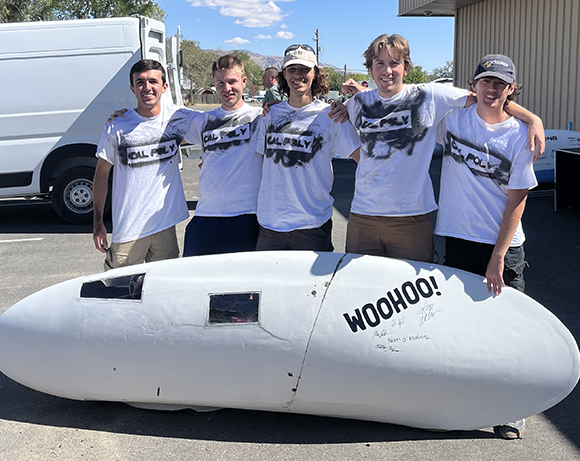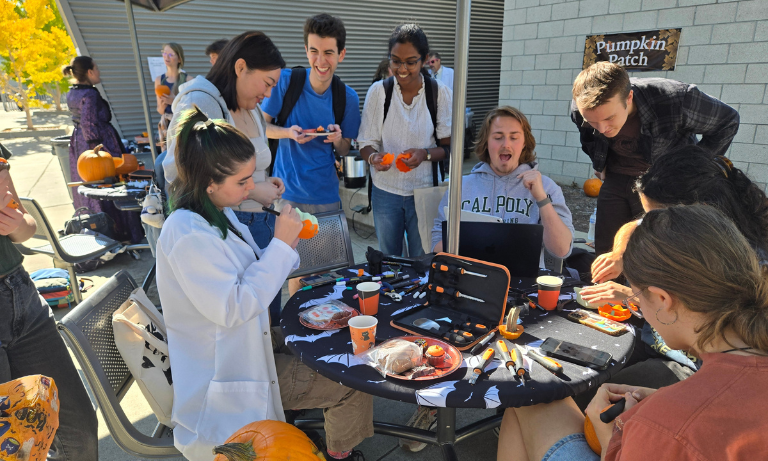The launch is the hardest part. One teammate runs, the rider takes control and the handoff has to be flawless. On Nevada’s Highway 305, mechanical engineering student Nathan Walker felt the bike settle under him. He pointed it down the 5-mile runway, and Cal Poly was back at the World Human Powered Speed Challenge.
The event draws university and private teams from around the world, each with its own take on a fully enclosed speed bike. Riders accelerate for five miles before entering a 200-meter timing zone where lasers record top speed. No batteries or stored power are allowed, so every mile must be pedaled in real time.
By the end of the weeklong competition in September, Walker and his teammates reached 50.08 mph — the club’s fastest time since before the pandemic.
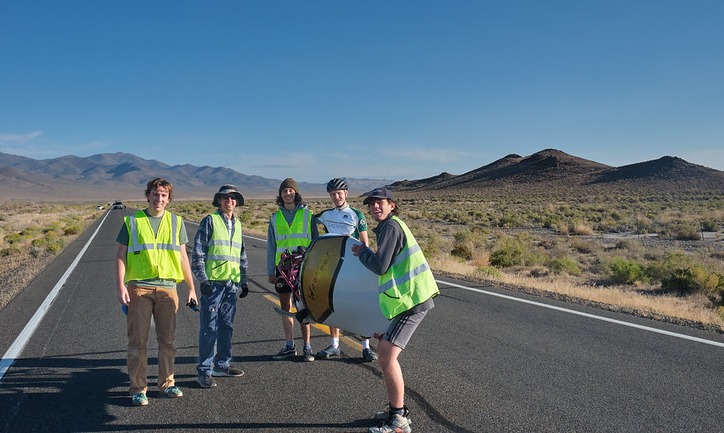
Founded in 1977, Cal Poly’s Human Powered Vehicle (HPV) Club is one of the university’s oldest competitive engineering teams. For decades, students have designed, built and raced aerodynamic bicycles that blend engineering precision with athletic effort. But after COVID-19, the club’s membership and momentum nearly vanished.
“When I joined, we only had about six members,” said Walker, now in his fourth year. “It was a small group trying to bring the club back to life.”
A year later, mechanical engineering student and current president Alistair Hynes joined the team and found the rebuilding effort already underway.
“I had no CAD experience and no manufacturing experience,” Hynes said. “The only thing I knew about bikes was how to ride them. But that’s the spirit of this club. We’ll teach you everything you need to know.”
As the team grew, Hynes became part of the core group steering it back toward high-speed racing.
The shift began in 2024, when the club moved from an agility-based competition in Boise to the high-speed challenge at Battle Mountain, where top speeds can climb past 80 mph. Their Boise bike had three wheels; Battle Mountain required a two-wheeled design built purely for speed.
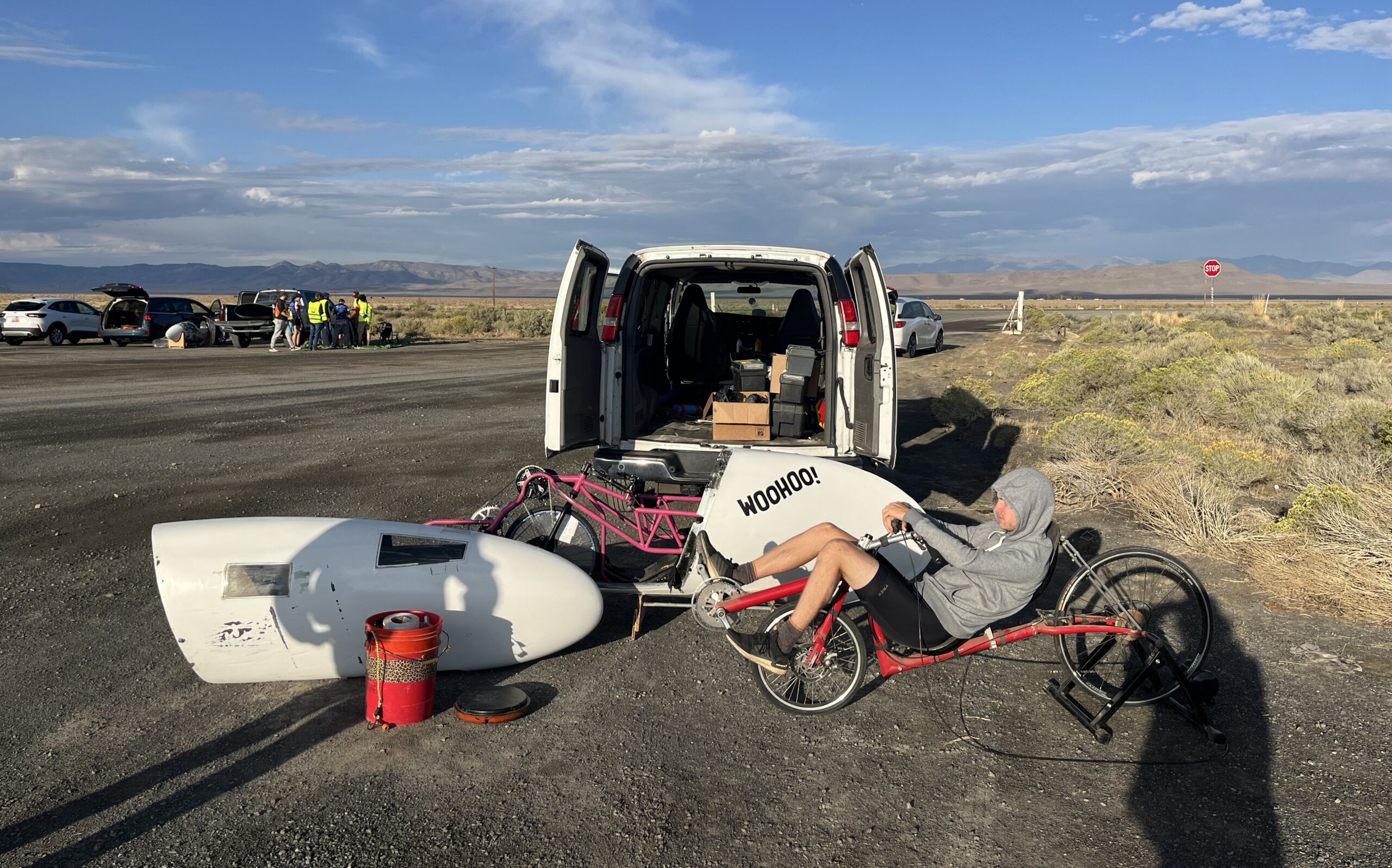
“We had to build a new bike from scratch,” Hynes said. “The only thing we started with was the shape of the bike’s external carbon-fiber shell.”
The team modeled the frame after its 2019 vehicle but scaled it down for better aerodynamics. Built from steel tubing, the new design took shape over months of trial and error. By spring, a bike called Woohoo! was ready for testing.
The name came from a quiet Slack channel. “Anytime someone would post, it felt like no one was there,” Hynes said. “So, after one message I just wrote ‘Woohoo!,’ and it stuck.”
That light moment gave way to a much bigger challenge. In the final weeks before competition, the team faced an unexpected setback. Their intended rider, for whom the bike had been custom-fit, couldn’t attend because of an internship. Walker volunteered, even though he was 6 inches taller.
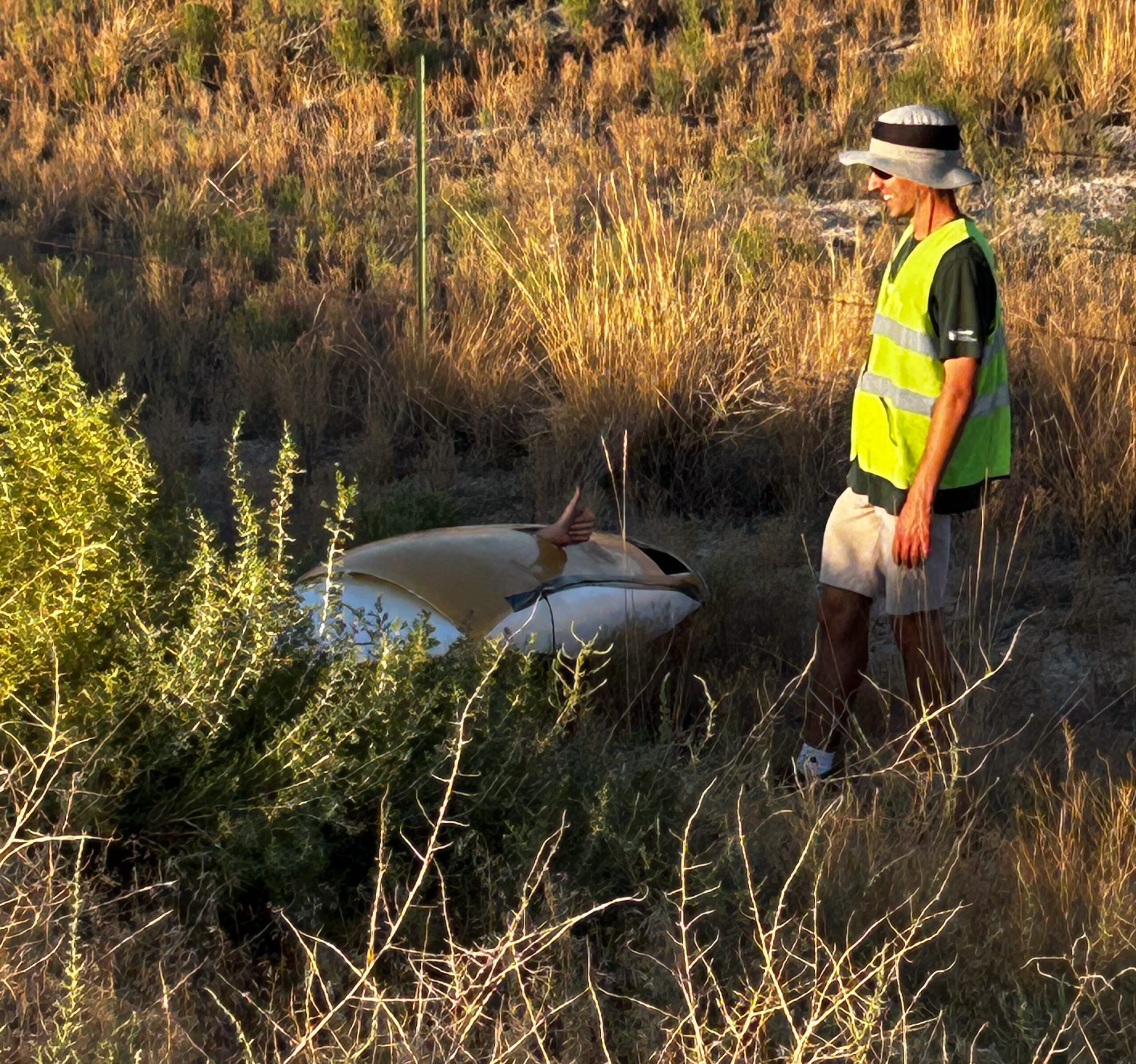
“It was like a coffin,” he said, laughing. “My knees barely had any extension, and my feet were grinding against the fairing. We literally had to grind away part of it to make space.”
He also wasn’t a bike racer. With only weeks to go, Walker bought a road bike and started sprint training every day after work. “I’d only done some weekend mountain biking, no sprint work,” he said.
Then came the next surprise: Walker couldn’t see straight ahead. Woohoo! didn’t have a central windshield, and his reclined position made it impossible to track the road.
“There were windows on the right and left, and because I was reclined so far back, we thought, ‘Why cut a central windshield?’” Walker said. “But going down the road, I had no clue where I was or if I was straight.”
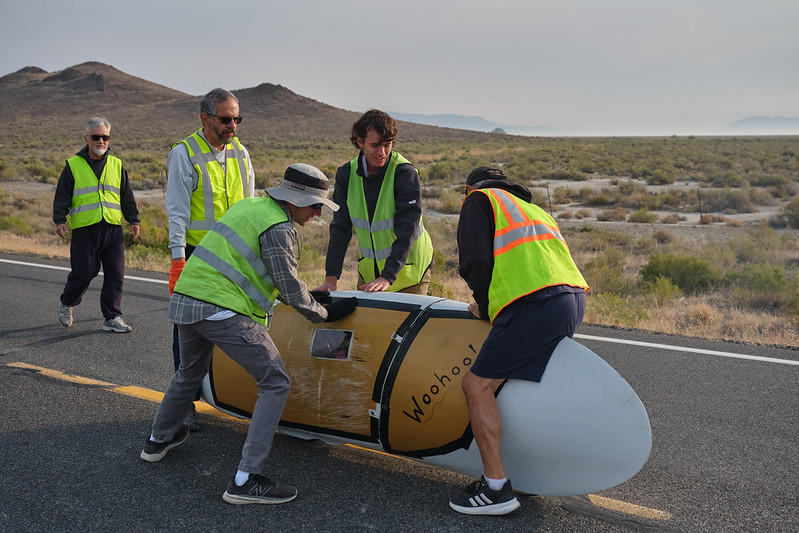
Between heats, the team cut a 2-inch-by-3-inch opening so Walker could glimpse the road and centerline. “Being able to see that tiny strip made all the difference,” he said. Next year, they plan to switch to a camera and screen, like the fastest bikes do.
Before they could attempt the full 5-mile course, they had to qualify on a 2.5-mile run and hit 40 mph. Early attempts topped out in the high 30s, but by late in the week they finally cleared the mark. That left only a handful of full-length runs, and 50.08 mph came on their final attempt.
The time wasn’t wind legal because of a headwind, but it was still the club’s fastest performance since before the pandemic, achieved alongside teams from Canada, Germany, the Netherlands, Australia and France, many of them seasoned veterans of the event.
“When we finally hit 50, it felt like everything we’d worked for paid off,” Walker said. “After all the setbacks, just getting there was a win.”
Back in San Luis Obispo, that progress has carried forward. The club has grown to more than 20 members, meeting weekly to tackle two parallel projects. They’re iterating on Woohoo!, making key components adjustable so different riders can fit the bike, and developing a carbon-fiber frame for a two-year build that will debut at the 2027 competition, the club’s 50th anniversary.
The goal for that anniversary run? Break 70 mph and set a new Cal Poly record.
By Emily Slater
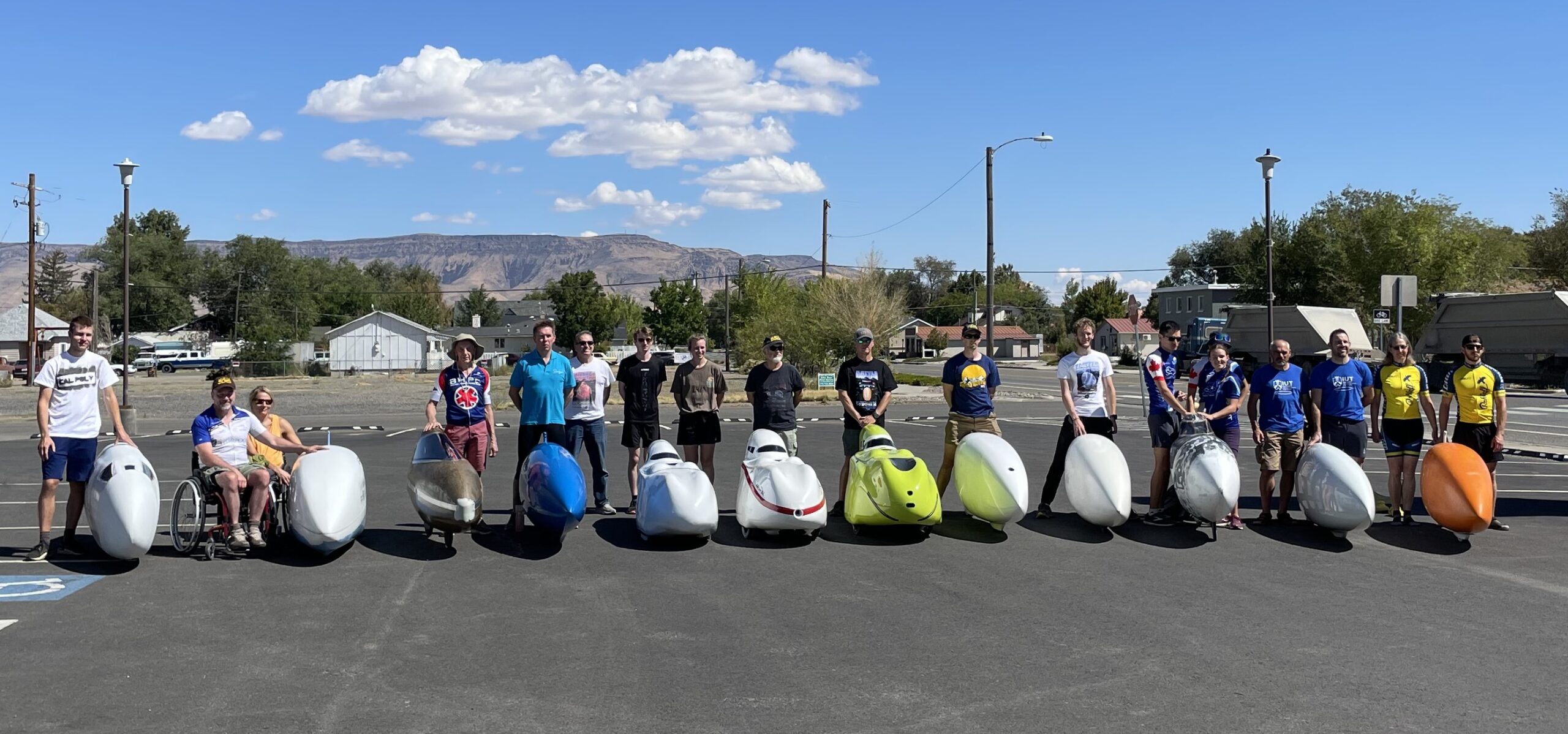
Join the Club
Students interested in joining or riding with the team are welcome to stop by a meeting on Thursdays in Building 192 or Sundays at the Hangar. They can also email calpolyhpvpresident@gmail.com or follow the club on Instagram at @calpolyhpv.

